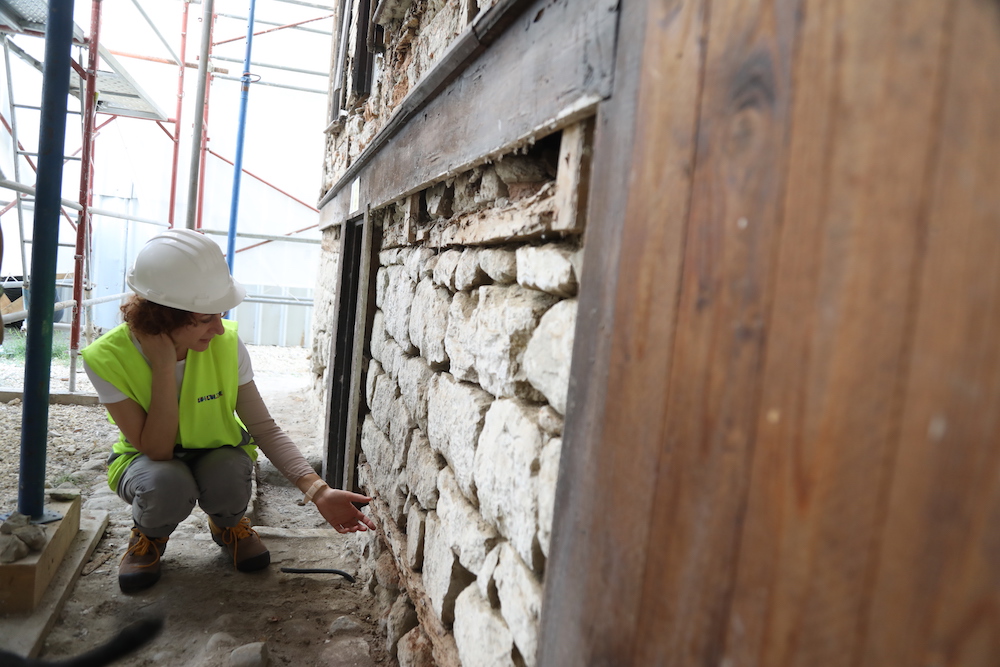EU4Culture Engages Scholars to Reveal New Pages of Albanian History

Archaeologists and historians have a group of unlikely allies: trees. Dendrochronology, the scientific method of studying tree rings, can pinpoint the age of archaeological sites using information stored inside old wood. Originally developed for climate science, the method is now an invaluable tool for archaeologists and historians, who can track up to 13,000 years of history using tree ring chronologies.
Today, dendrochronology is a critical tool for helping date archaeological sites and artifacts in Albania and across the world. The term was derived from the ancient Greek words for tree (dendron) and time (khronos).
When historians or archaeologists recover timbers during excavations or renovations, like last month during renovations works at the Ethnographic Museums in Kruja and Kavaja, they either cut full cross-section or retrieve cross-section cores, then compare them to regional chronologies to find matching ring patterns and determine a site’s age. Differing ages in specimens can reveal waves of construction at a particular site, or reveal migration and trade patterns with pieces of wood that were not cut locally.
Today, we spoke with Doctor Esmeralda Agolli, an Associate Professor at the Department of Archaeology and Culture Heritage of the University of Tirana, to understand how cultural heritage sites renovated under the EU-funded EU4Culture programme implemented by the United Nations Office for Project Services (UNOPS) become platforms helping scholars to shed light on Albanian history.
“The restoration project carried out in the Ethnographic Museums of Kruja and Kavaja have offered the unique opportunity to unveil in these houses a myriad of details regarding their architecture, transformation over time, building material and above to what extent all these features reflect life and action within and outside these two compounds.
Such opportunity has proven precious also for allowing systematic research in the material properties of each house. With the wooden structure in particular, analysis of absolute dating through dendrochronology and wood anatomy have been one most recent endeavor in which the EU4Culture project is cooperating with the Department of Archaeology and Culture Heritage at Tirana University and the Balkan-Aegean-Dendrochronology project.
We aim to collect wooden samples from these two houses and later explore the wooden structures of the castle of Bashtova. Above all, such a unique opportunity allows us to apply a non-destructive methodology – only by obtaining samples from wooden materials which due to their poor state of preservation are to be removed. In addition, we are attempting to be comprehensive and collect wooden pieces from every structure of the building.
A high profile of researchers will conduct analysis to the collected samples and focus mainly on dendrochronology and wood anatomy. Quite enthusiastically, we expect the results to highlight some interesting matters. The analysis of the tree rings will contribute to obtaining absolute dates for the construction of the houses. Perhaps some dynamics of various phases of constructions could interestingly be revealed too. So far, both houses and the castle of Bashtove are solely dated conventionally, by considering mostly the architectural features and general historic sources.
Analysis on wood anatomy will indeed contribute to understanding the origin and the typology of wood used as building material. Here we open our horizons on issues that regard the exploration of the environment, availability of raw material in the regions of Kavaja and Kruja, and possibly routes of the movement of goods.
This is seminal research in Albania and indeed could inspire further studies and explorations to wood material and beyond. Exciting discoveries lie ahead!”



